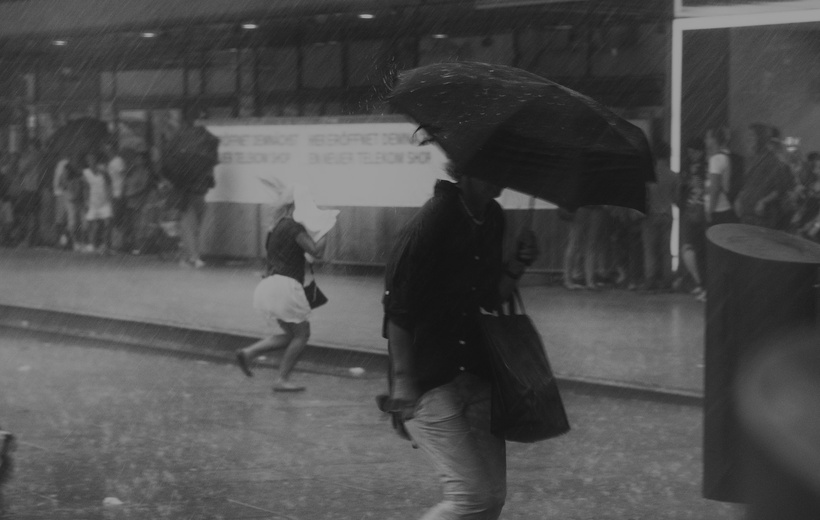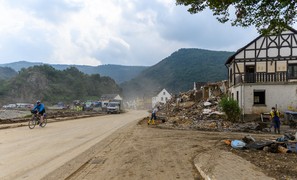Half of the annual precipitation falls in fewer and fewer days

Photo: Heavy rain in Berlin (Sascha Kohlmann, www.flickr.com)
Global warming is changing the annual distribution of daily precipitation across Europe. In parts of Europe, total precipitation volumes are increasing, in other parts they are decreasing, but almost everywhere it rains much harder when it rains. This has already been observed in precipitation data from the past and this trend will continue this century. We’ve seen the impacts in the media: extreme precipitation events causing severe floods and landslides, such as the event in July 2021 in Germany, Belgium, Luxembourg and the Netherlands. At the same time extreme drought events are becoming more frequent as well.
A simple indicator to express these changes is the number of wettest days it takes to produce 50% of the annual precipitation. From detailed datasets of precipitation across Europe, this indicator was calculated for the period 1950–2021. In many parts of Europe half of the annual precipitation falls in 22–34 days. Between the periods of 1950–1985 and 1986–2021, this number has reduced by at least two days in 40% of Europe’s land area, especially in southern and central Europe.
The fact that this number of days has decreased the most in the south of Europe is dramatic since this indicator is already the lowest in the south. This indicator generally decreases over Europe in a north-south direction. In most parts of western, central, and northern Europe, it takes between 22 and 34 of the wettest days to make up 50% of the annual precipitation, while this number is only 16 in areas along the Mediterranean Sea.
This increasingly uneven distribution of daily precipitation throughout the year will challenge water management infrastructure and future water availability for the agricultural, hydropower, ecological, and urban sectors, and will continue to cause extreme flash flooding events. Already, 70% of Europe’s flood casualties are due to flash floods – mainly in southern Europe – and the number of flash floods is increasing.
Source: Goffin et al., 2024. Geophysical Research Letters 51: e2023GL107403, doi: 10.1029/2023GL107403.






